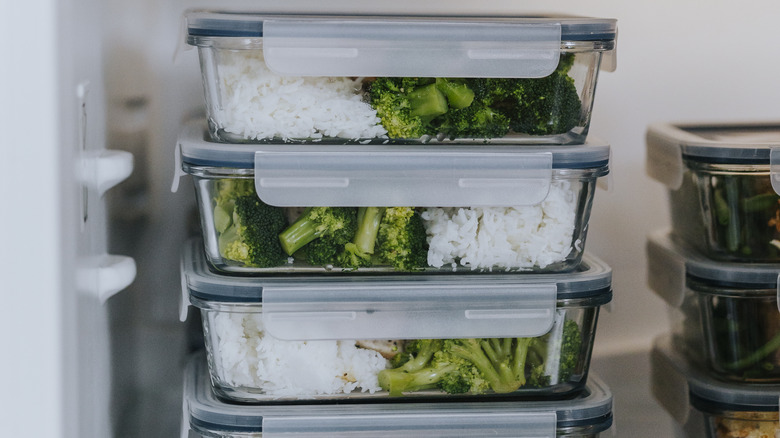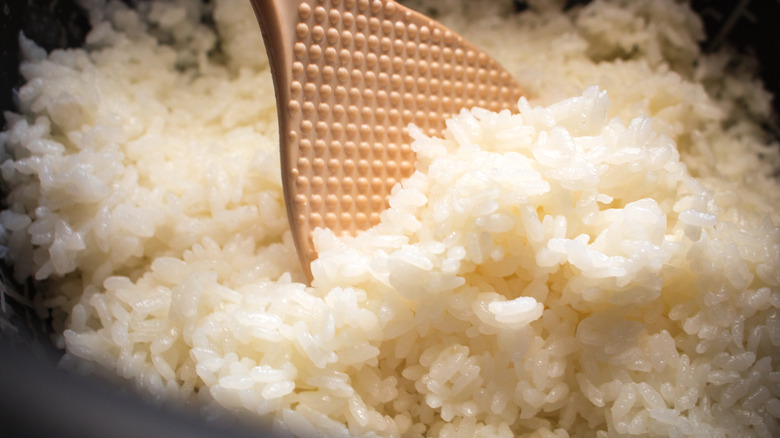How Long Is Rice Good For In The Fridge? Signs It's Time To Toss It
Rice is one of the most versatile, tasty, and reliable carbohydrates across many different cuisines. If you're someone who cooks with rice frequently, you know that it can be quite filling, and it's common to end up with leftovers. Fortunately, second-day rice still has plenty of culinary utility! Use it to make sweet rice pudding, Japanese-inspired crispy ketchup rice, or simply the best fried rice you've ever eaten.
When it comes to reheating leftover rice, however, carefulness is key. Leftover rice on its second or even third day in the fridge can be a delight, but like many perishable foods, cooked rice has a relatively short shelf life, even when stored correctly. When properly cooled, stored, and reheated, the U.S. Department of Agriculture's food safety app, FoodKeeper, advises that refrigerated rice can be safely eaten within four to six days of cooking. The USDA's guidance is a bit more cautious when it comes to leftovers that might include rice and vegetables, recommending a more strict four day maximum.
Above all, regardless of how long it's been stored, you should immediately discard rice that smells bad or funky, appears slimy, or shows any signs of mold growth (like colored spots). Harmful bacteria can multiply quickly in cooked rice, so if anything appears off, err on the side of being safe, rather than sorry.
The potential dangers of reheated rice
You may be more used to considering the shelf life of meat and other animal products than rice, but it's time to shift that mindset. Rice commonly contains spores of Bacillus cereus, a bacteria found in soil. Unlike some other kinds of food-tainting bacteria, B. cereus is heat-resistant and not killed off by cooking. When cooked rice is left in the room temperature "danger zone," the bacteria multiplies and produces toxins that can cause food poisoning.
This phenomenon has even garnered its own name after going viral on social media platforms like TikTok: reheated rice syndrome. While Bacillus cereus is commonly associated with rice, it's also found in other starches like pasta and potatoes. The good news, however, is that it's not considered a particularly life-threatening or excessively dangerous bacteria. While contracting food poisoning from Bacillus cereus may be unpleasant, it typically clears up within 24 hours. And as an article from the University of Washington Medicine points out, the estimated 63,000 annual cases of foodborne illness caused by Bacillus cereus make up only a tiny percentage of the 48 million yearly cases reported in the United States.
The most important tip to keep in mind when dealing with leftover rice is to refrigerate (or freeze) it in small batches immediately after cooking. Follow proper storage and reheating procedures, don't leave it sitting in a room temperature environment for more than two hours, and eat it within a few days, and you should avoid any issues.

